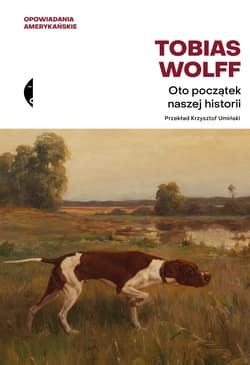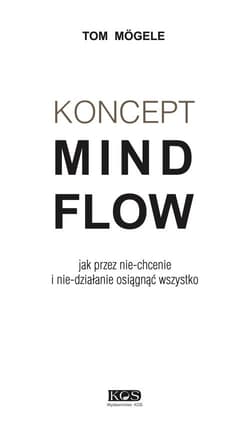Cychnerski Tomasz
42,00 zł
Najniższa cena z 30 dni przed obniżką.
56,00 zł
- sugerowana cena detaliczna
Cychnerska Anna,
Artur Karasiński,
Cychnerski Tomasz
Chwilowo niedostępny
Książka. Okładka broszurowa (miękka)
Bestsellery
37,46 zł
Najniższa cena z 30 dni przed obniżką.
49,90 zł
- sugerowana cena detaliczna
Vitale Joe
Książka. Okładka broszurowa (miękka)
33,95 zł
Najniższa cena z 30 dni przed obniżką.
49,90 zł
- sugerowana cena detaliczna
Grzegorz Kucharczyk
9,0 (4)
Książka. Okładka broszurowa (miękka)
27,44 zł
Najniższa cena z 30 dni przed obniżką.
34,99 zł
- sugerowana cena detaliczna
Joseph Murphy
Książka. Okładka broszurowa (miękka)
33,99 zł
Najniższa cena z 30 dni przed obniżką.
54,99 zł
- sugerowana cena detaliczna
Philippa Gregory
8,5 (4)
Książka. Okładka broszurowa ze skrzydełkami
47,94 zł
Najniższa cena z 30 dni przed obniżką.
79,90 zł
- sugerowana cena detaliczna
Daniel Warzocha
Książka. Okładka twarda
25,99 zł
Najniższa cena z 30 dni przed obniżką.
39,99 zł
- sugerowana cena detaliczna
null null
Książka. Okładka broszurowa (miękka)
32,55 zł
Najniższa cena z 30 dni przed obniżką.
54,90 zł
- sugerowana cena detaliczna
Szczepan Twardoch
6,3 (638)
Książka. Okładka broszurowa ze skrzydełkami
33,25 zł
Najniższa cena z 30 dni przed obniżką.
54,99 zł
- sugerowana cena detaliczna
Katarzyna Puzyńska
7,4 (281)
Książka. Okładka broszurowa ze skrzydełkami
36,99 zł
Najniższa cena z 30 dni przed obniżką.
59,99 zł
- sugerowana cena detaliczna
Przemysław Piotrowski
10,0 (1)
Książka. Okładka twarda
29,94 zł
Najniższa cena z 30 dni przed obniżką.
49,90 zł
- sugerowana cena detaliczna
Gołębiowski Jan
7,4 (118)
Książka. Okładka broszurowa (miękka)
31,59 zł
Najniższa cena z 30 dni przed obniżką.
49,99 zł
- sugerowana cena detaliczna
Hakan Nesser
7,0 (59)
Książka. Okładka broszurowa (miękka)
37,39 zł
Najniższa cena z 30 dni przed obniżką.
54,99 zł
- sugerowana cena detaliczna
Beatriz Serrano
7,3 (667)
Książka. Okładka broszurowa ze skrzydełkami
25,60 zł
Najniższa cena z 30 dni przed obniżką.
39,90 zł
- sugerowana cena detaliczna
Marta Matyszczak
7,0 (1)
Książka. Okładka broszurowa (miękka)
28,89 zł
Najniższa cena z 30 dni przed obniżką.
44,99 zł
- sugerowana cena detaliczna
Andy Hirsch
Książka. Okładka twarda
31,59 zł
Najniższa cena z 30 dni przed obniżką.
49,99 zł
- sugerowana cena detaliczna
Uketsu
7,5 (1328)
Książka. Okładka broszurowa ze skrzydełkami
38,25 zł
Najniższa cena z 30 dni przed obniżką.
66,90 zł
- sugerowana cena detaliczna
Tobias Wolff
Książka. Okładka twarda
54,39 zł
Najniższa cena z 30 dni przed obniżką.
79,99 zł
- sugerowana cena detaliczna
Zeinab Badawi
7,3 (67)
Książka. Okładka twarda
28,89 zł
Najniższa cena z 30 dni przed obniżką.
44,99 zł
- sugerowana cena detaliczna
Andy Hirsch
Książka. Okładka twarda
29,99 zł
Najniższa cena z 30 dni przed obniżką.
49,90 zł
- sugerowana cena detaliczna
Anna Kańtoch
6,8 (604)
Książka. Okładka broszurowa ze skrzydełkami
53,40 zł
Najniższa cena z 30 dni przed obniżką.
89,00 zł
- sugerowana cena detaliczna
Tom Holland
7,4 (23)
Książka. Okładka twarda
28,99 zł
Najniższa cena z 30 dni przed obniżką.
44,99 zł
- sugerowana cena detaliczna
Andy Hirsch
Książka. Okładka twarda
34,54 zł
Najniższa cena z 30 dni przed obniżką.
49,99 zł
- sugerowana cena detaliczna
Amir Levine,
Rachel Heller
Książka. Okładka broszurowa (miękka)
37,60 zł
Najniższa cena z 30 dni przed obniżką.
49,99 zł
- sugerowana cena detaliczna
Alicja Sinicka
Książka. Okładka broszurowa ze skrzydełkami
37,39 zł
Najniższa cena z 30 dni przed obniżką.
54,99 zł
- sugerowana cena detaliczna
Kelly Rimmer
7,8 (121)
Książka. Okładka broszurowa ze skrzydełkami
36,33 zł
Najniższa cena z 30 dni przed obniżką.
59,90 zł
- sugerowana cena detaliczna
Bonnie Garmus
10,0 (1)
Książka. Okładka broszurowa (miękka)
28,83 zł
Najniższa cena z 30 dni przed obniżką.
44,99 zł
- sugerowana cena detaliczna
Danielle Collins
Książka
54,00 zł
Najniższa cena z 30 dni przed obniżką.
119,99 zł
- sugerowana cena detaliczna
Jon Peterson,
Kyle Newman,
Michael Witwer
Książka. Okładka twarda
59,94 zł
Najniższa cena z 30 dni przed obniżką.
99,90 zł
- sugerowana cena detaliczna
Andrzej Chwalba
Książka. Okładka twarda
36,99 zł
Najniższa cena z 30 dni przed obniżką.
59,99 zł
- sugerowana cena detaliczna
Thomas Erikson
Książka. Okładka broszurowa ze skrzydełkami
36,68 zł
Najniższa cena z 30 dni przed obniżką.
49,50 zł
- sugerowana cena detaliczna
Babiański Wojciech,
Chańko Lech,
Czarnowska Joanna
Książka. Okładka broszurowa (miękka)
34,99 zł
Najniższa cena z 30 dni przed obniżką.
59,90 zł
- sugerowana cena detaliczna
Amanda Montell
Książka. Okładka twarda
37,68 zł
Najniższa cena z 30 dni przed obniżką.
64,90 zł
- sugerowana cena detaliczna
Kathleen Hale
Książka. Okładka twarda
29,94 zł
Najniższa cena z 30 dni przed obniżką.
49,90 zł
- sugerowana cena detaliczna
Ulf Ellervik
7,2 (364)
Książka. Okładka broszurowa (miękka)
37,49 zł
Najniższa cena z 30 dni przed obniżką.
49,99 zł
- sugerowana cena detaliczna
Małgorzata Oliwia Sobczak
10,0 (1)
Książka. Okładka broszurowa ze skrzydełkami
36,25 zł
Najniższa cena z 30 dni przed obniżką.
59,99 zł
- sugerowana cena detaliczna
Thomas Erikson
6,0 (17)
Książka. Okładka broszurowa ze skrzydełkami
27,64 zł
Najniższa cena z 30 dni przed obniżką.
34,99 zł
- sugerowana cena detaliczna
Colleen Doran
8,0 (8)
Książka. Okładka broszurowa (miękka)
30,49 zł
Najniższa cena z 30 dni przed obniżką.
49,90 zł
- sugerowana cena detaliczna
Andrzej Kobalczyk
8,0 (2)
Książka. Okładka broszurowa (miękka)
41,78 zł
Najniższa cena z 30 dni przed obniżką.
59,50 zł
- sugerowana cena detaliczna
Hicks Esther i Jerry
Książka. Okładka broszurowa (miękka)
38,78 zł
Najniższa cena z 30 dni przed obniżką.
59,99 zł
- sugerowana cena detaliczna
Peter A. Levine
Książka. Okładka broszurowa ze skrzydełkami
24,27 zł
Najniższa cena z 30 dni przed obniżką.
29,99 zł
- sugerowana cena detaliczna
null
Książka. Okładka broszurowa (miękka)
59,40 zł
Najniższa cena z 30 dni przed obniżką.
99,00 zł
- sugerowana cena detaliczna
Geoff Johns Gary Frank
Książka. Okładka broszurowa (miękka)
49,99 zł
Najniższa cena z 30 dni przed obniżką.
68,00 zł
- sugerowana cena detaliczna
Marc Hartzman
8,1 (43)
Książka. Okładka broszurowa ze skrzydełkami
28,83 zł
Najniższa cena z 30 dni przed obniżką.
44,99 zł
- sugerowana cena detaliczna
Peter A. Levine
5,0 (1)
Książka. Okładka broszurowa (miękka)
39,94 zł
Najniższa cena z 30 dni przed obniżką.
59,90 zł
- sugerowana cena detaliczna
J.R.R. Tolkien
8,1 (25059)
Książka. Okładka broszurowa (miękka)
27,85 zł
Najniższa cena z 30 dni przed obniżką.
44,90 zł
- sugerowana cena detaliczna
Anna Falatyn
Książka. Okładka broszurowa (miękka)
32,69 zł
Najniższa cena z 30 dni przed obniżką.
44,90 zł
- sugerowana cena detaliczna
Delia Owens
7,9 (50782)
Książka. Okładka broszurowa ze skrzydełkami
32,94 zł
Najniższa cena z 30 dni przed obniżką.
54,90 zł
- sugerowana cena detaliczna
Szymon Pilarz
Książka. Okładka broszurowa ze skrzydełkami
27,49 zł
Najniższa cena z 30 dni przed obniżką.
44,40 zł
- sugerowana cena detaliczna
Pavlina Klemm
Książka. Okładka broszurowa (miękka)
24,71 zł
Najniższa cena z 30 dni przed obniżką.
39,90 zł
- sugerowana cena detaliczna
Ewa Stusińska
6,6 (751)
Książka. Okładka twarda
26,61 zł
Najniższa cena z 30 dni przed obniżką.
37,00 zł
- sugerowana cena detaliczna
Jan Brzechwa
6,6 (18589)
Książka. Okładka twarda
20,94 zł
Najniższa cena z 30 dni przed obniżką.
34,90 zł
- sugerowana cena detaliczna
Jan Brzechwa
6,8 (1442)
Książka. Okładka twarda
37,99 zł
Najniższa cena z 30 dni przed obniżką.
52,00 zł
- sugerowana cena detaliczna
Ed Yong
7,8 (145)
Książka. Okładka broszurowa ze skrzydełkami
85,99 zł
Najniższa cena z 30 dni przed obniżką.
120,00 zł
- sugerowana cena detaliczna
Andre Franquin
Książka. Okładka twarda
84,99 zł
Najniższa cena z 30 dni przed obniżką.
129,00 zł
- sugerowana cena detaliczna
Siber Kate,
Skurka Andrew
Książka. Okładka twarda
61,92 zł
Najniższa cena z 30 dni przed obniżką.
99,99 zł
- sugerowana cena detaliczna
Książka
38,76 zł
Najniższa cena z 30 dni przed obniżką.
64,60 zł
- sugerowana cena detaliczna
Hicks Esther,
Hicks Jerry
Książka. Okładka broszurowa ze skrzydełkami
33,99 zł
Najniższa cena z 30 dni przed obniżką.
48,00 zł
- sugerowana cena detaliczna
Bogdan Frymorgen
Książka. Okładka broszurowa ze skrzydełkami
32,40 zł
Najniższa cena z 30 dni przed obniżką.
54,00 zł
- sugerowana cena detaliczna
Tom Mogele
Książka. Okładka twarda
67,73 zł
Najniższa cena z 30 dni przed obniżką.
97,00 zł
- sugerowana cena detaliczna
Anna Neumann
Książka. Okładka broszurowa (miękka)
27,34 zł
Najniższa cena z 30 dni przed obniżką.
42,90 zł
- sugerowana cena detaliczna
Anna Widawska
6,4 (5)
Książka. Okładka broszurowa (miękka)
































































